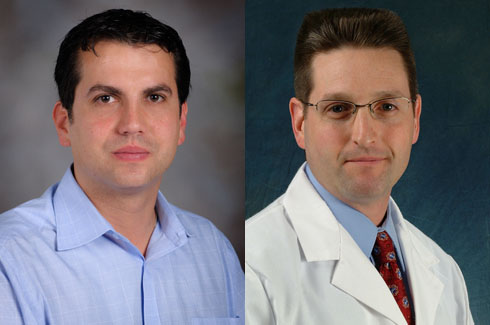New technology shows promise for delivery of therapeutics to the brain

A new technology that may assist in the treatment of brain cancer and other neurological diseases is the subject of an article in a recent issue of the journal Technology, published by World Scientific Publishing Company.
According to the authors, the current medical use of chemotherapy to treat brain cancer can be inefficient because of the blood-brain-barrier that impedes the delivery of drugs out of blood vessels and into the tumor.
The researchers from the Virginia Tech -- Wake Forest University School of Biomedical Engineering and Sciences described in their article that they have created "a tool for blood-barrier-brain disruption that uses bursts of sub-microsecond bipolar pulses to enhance the transfer of large molecules to the brain."
The members of the biomedical school are: Rafael V. Davalos, associate professor of biomedical engineering; John H. Rossmeisl Jr., and Thomas Rogers-Cotrone of the Virginia-Maryland College of Veterinary Medicine; Christopher Arena, Paulo A. Garcia, and Michael B. Sano of the Bioelectromechanical Systems Laboratory; and John D. Olson of the Center for Biomolecular Imaging.
Garcia is also employed by the Laboratory for Energy and Microsystems innovation at the Massachusetts Institute of Technology. Arena holds a second appointment with the Laboratory for Ultrasound Contract Agent Research at the University of North Carolina -- North Carolina State University, Joint Department of Biomedical Engineering.
The new tool is called Vascular Enabled Nanosecond pulse or VEIN pulse. It will "reversibly open the blood-brain-barrier to facilitate the treatment of brain cancer," Davalos explained.
"The sub-lethal nature of these electrical bursts indicates that the VEIN pulse may be useful for treating other neurological disorders such as Parkinson's disease, epilepsy, and Alzheimer's disease," Davalos added.
In their testing, the VEIN pulse treatments were administered using minimally invasive electrodes inserted into the skull of each of the 18 anesthetized male rats. They varied the pulse duration within a burst, the total number of bursts (90 to 900), and the applied field. A key element of their success was that the pulses alternated in polarity to help eliminate muscle contractions and the need for a neuromuscular blockade.
The research was supported by the Golfers Against Cancer, the Center for Biomolecular Imaging in the Wake Forest School of Medicine, a National Science Foundation CAREER Award, and an NSF I-Corps Award.
The next step in this research would be to move to large animal, pre-clinical trials.
Davalos has been using electrical impulses in his biomedical research since his days as a graduate student at the University of California -- Berkeley. More recently, in a February 2011 article in the Journal of Clinical Oncology, Davalos, Gacia and Rossmeisl were among the authors who described a successful use of irreversible electroporation to achieve complete remission and improved quality of life in a seven-year old Labrador retriever with a large and complex tumor.
Dedicated to its motto, Ut Prosim (That I May Serve), Virginia Tech takes a hands-on, engaging approach to education, preparing scholars to be leaders in their fields and communities. As the commonwealth’s most comprehensive university and its leading research institution, Virginia Tech offers 240 undergraduate and graduate degree programs to more than 31,000 students and manages a research portfolio of $513 million. The university fulfills its land-grant mission of transforming knowledge to practice through technological leadership and by fueling economic growth and job creation locally, regionally, and across Virginia.








